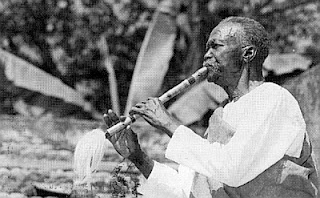another one from the archives(updated) till these annoying matters with
packupload are solved -inactive for the second day.I will remain optimistic in spite all odds
The Baganda people make up the largest ethnic group in Uganda, though they represent only 16.7 per cent of the population. (The name Uganda, is in fact the Swahili term for Buganda)
They speak a Bantu dialect called Luganda belonging to the Niger-Congo family. Like many other African languages, it is a tonal language which means that some words are differentiated by means of pitches. Words that are spelled in the same way, however, have a different meaning. It is a language that is rich in metaphors and proverbs.
Buganda is located in central Uganda as the region of the Baganda people. Its nucleus is Kampala city. Baganda's boundaries are marked by Lake Victoria in the south, the Victoria Nile River on the east, and Lake Kyoga on the north. The kingdom comprises 52 clans. At present it is the largest of the traditional kingdoms.
packupload are solved -inactive for the second day.I will remain optimistic in spite all odds
The Baganda people make up the largest ethnic group in Uganda, though they represent only 16.7 per cent of the population. (The name Uganda, is in fact the Swahili term for Buganda)
They speak a Bantu dialect called Luganda belonging to the Niger-Congo family. Like many other African languages, it is a tonal language which means that some words are differentiated by means of pitches. Words that are spelled in the same way, however, have a different meaning. It is a language that is rich in metaphors and proverbs.
Buganda is located in central Uganda as the region of the Baganda people. Its nucleus is Kampala city. Baganda's boundaries are marked by Lake Victoria in the south, the Victoria Nile River on the east, and Lake Kyoga on the north. The kingdom comprises 52 clans. At present it is the largest of the traditional kingdoms.
The Baganda People passes through the stages of omwana (child), omuvubuka (youth), and omusajja or omukazi (man or woman). After death one becomes an omuzimu (spirit), and the Baganda also believe in rebirth .
Their music is mainly slow with more emphasis on a regular meter. It is composed of contrasted lyrics and yodles .The Baganda have a huge variety of song forms such as; lullabies, historical songs, work songs, ceremonic songs, praise the kings (royal songs), wedding songs, etc. The scale is purely pentatonic.Most of the vocal lines are in a responsarial form, solo form and chorus form. Since these songs are vocal dominant, they are basically meant to deal with social transformation. Funerals are major ceremonial and social events.
In addition to voice, a range of instruments are used, including the Amadinda & Akadinda xylophones, the Ennanga harp, the Etongoli lyre, drums, and the Kadongo (plural "budongo") lamellophone.
The several ensembles of court musicians maintained by the Kabakas were guardians of both political and musical tradition.The language is metaphorical and symbolic.and employs humour, mime and community theatre to generate positive values upon which current social conduct can be based.The kadongo, was more recently introduced to Baganda music, dating to the early 20th century.
After the kingdoms were abolished in 1968 by Milton Obote, most of the musicians refused to play royal music anymore, as a form of protest. Two decades later, most of the Abalere ba Kabaka were dead, or too old to play.Evalisto Muyinda one of the last remaining court musicians, developed and led ensembles formed from all the types of royal instruments, but he focused mainly on the amadinda xylophone, besides working for the National Museum and leading The Heartbeat of Africa dance ensemble.These 1991 recordings are featuring ennanga, endongo, endere , endingidi , amadinda and akadinda , percussion and vocal pieces.Evalisto Muyinda died two years later in 1993.
more to read here here here & here
....as formerly played at the court of the Kabaka



Ha! Nice one! Evalisto visited Frogland long ago and i followed them for a week for a radioprogram on him and his group. Happen to know the guy who owns the PAN-record company. (i won't tell him...)
ReplyDeletesalut!
Gerrit
:)
ReplyDelete